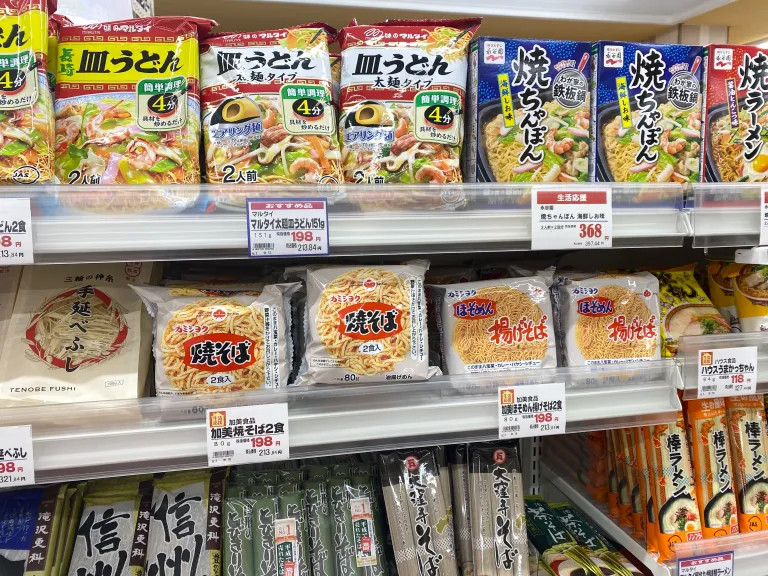
This is something we’ve never heard of–but not something we’re opposed to trying!
Our Japanese-language reporter Ikuna Kamezawa was visiting Osaka recently, and while checking out a local supermarket she came across a section full of “agesoba,” or deep-fried, crispy noodles. Ikuna has mostly known such crispy noodles to be udon-sized and topped with saucy vegetables in a Nagasaki dish called sara udon. To see them called “soba” was interesting…and they seemed to come in different sizes, too!
In any case, you don’t really see much agesoba being sold in Tokyo, and the shelves at this Osaka supermarket were packed with mostly local brands. Clearly, it’s a popular food for Osakans, so she decided to buy some to try out.
The ones she selected were called “Kamishoku”, an Osaka brand that retailed for 213 yen (US$1.43) each.
There was a thin type labeled “Agesoba” and a thick type called “Yakisoba.” Ikuna had no idea why, when “yakisoba” is its own, completely separate thing. But while that was confusing, what was entirely more pressing was the serving suggestions listed on the packaging.
▼ “Eat as is topped with baboacai (stir-fried Chinese vegetables), curry, stew, hayashi stew, or vegetable soup.”
“What?!” cried Ikuna. The stir-fried vegetables were fine, since that would basically be saru udon. The confusing part was everything else. Curry? Stew? Ikuna had never heard of such a thing!
In such situations where the cultural differences between Kansai and Kanto offer too many riddles, there is always one person in the office we can always rely on: Osaka native Seiji Nakazawa. He’s spent much of his life living in both places, so he’s an expert when it comes to answering our Tokyo-ite reporters’ burning questions. So, is it normal for Osakans to eat deep-fried noodles with stew and curry? And what does it taste like?
▼ Please tell us, guy from Osaka!
Seiji: “Um…I’ve never heard of that before…”
Not even our most reliable Osaka-born source knew. The circumstances were getting dicey, but Ikuna, a reputable journalist herself, knew what to do. There was no choice but to try it!
So she poured some curry over the agesoba (the skinny kind) and gave it a taste. It was really delicious!
Everyone in the office who was there to try it gave it high praise, saying it was even better than saru udon. It was different from eating regular curry rice too. Unlike rice, which plays a supporting role to curry, the crunch and flavor of the agesoba was a perfect match. It did not let the curry overpower it. If you were to think of them as a band, it would be like the curry was the vocalist and the agesoba was the guitarist. Without either of them, the band (or the curry agesoba) would not exist; they were equally vital to the harmony of the dish.
If Ikuna ran a diner or a bar, she would put this on the secret menu. No doubt it would be insanely popular!
Of course, just like saru udon, the longer the crispy noodles sat in the curry, the more moisture they absorbed and the soggier they got. But that was honestly just as delicious. It was like the world’s richest curry ramen. Ikuna used a ready-made curry-in-a-pouch this time, so she couldn’t wait to try it with a high-quality curry or an Indian curry. That would be out of this world!
Ikuna had another question, though. Along with stew and curry, the packaging also mentioned that you could serve the crispy noodles with “vegetable soup.” She had to wonder exactly what kind of “vegetable soup” they meant, so she once again asked Osaka-native Seiji, who once again replied, “I’ve never heard of that either.” The plot thickened. “Maybe I can use miso soup?” she wondered.
While rummaging in the office pantry, she found a pouch of “Kimchi hot pot”, which was essentially a vegetable soup with kimchee in it, so she decided to give that a try.
This hinted that she was on the right track, which further deepened the mystery. What more could one use agesoba for? It seemed like it had limitless potential, like rice, which can be used in so many infinite, unexpected ways–as rice buns, as a drink, even as a substitute for ramen. In the end, Ikuna still has no idea how popular curry agesoba might be in Osaka, but that doesn’t matter so much as this new culinary discovery that will now make its way onto her regular dinner rotation.
Images © SoraNews24
● Want to hear about SoraNews24’s latest articles as soon as they’re published? Follow us on Facebook and Twitter!
[ Read in Japanese ]

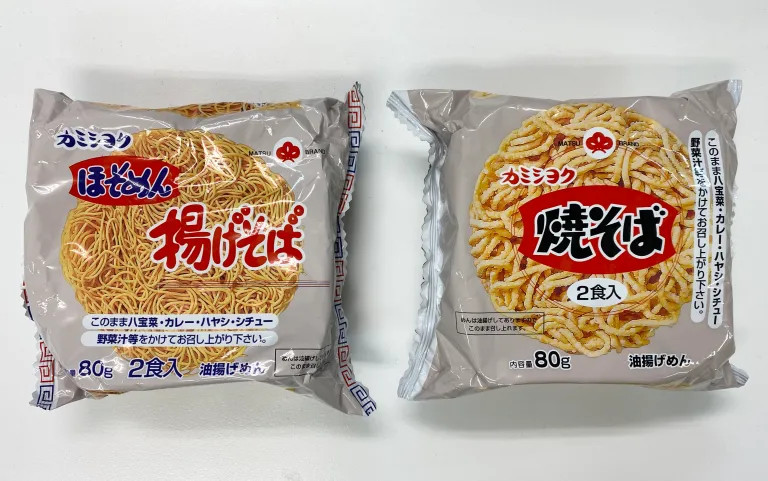
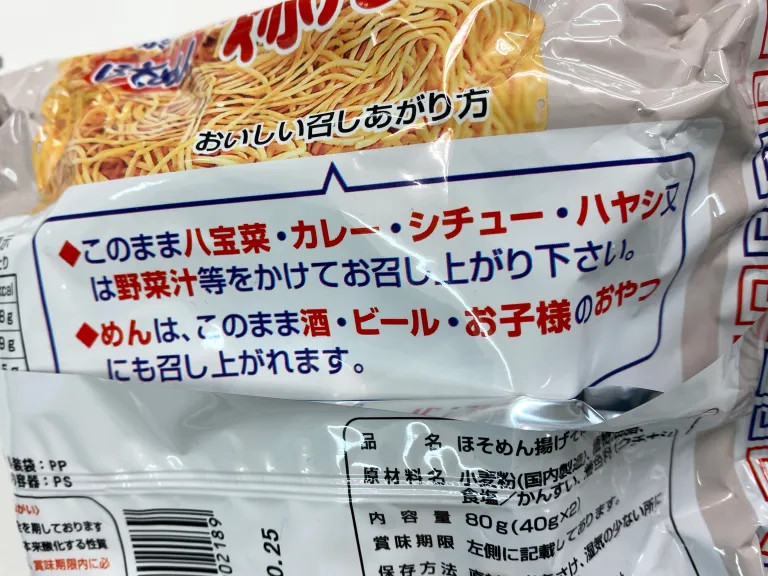
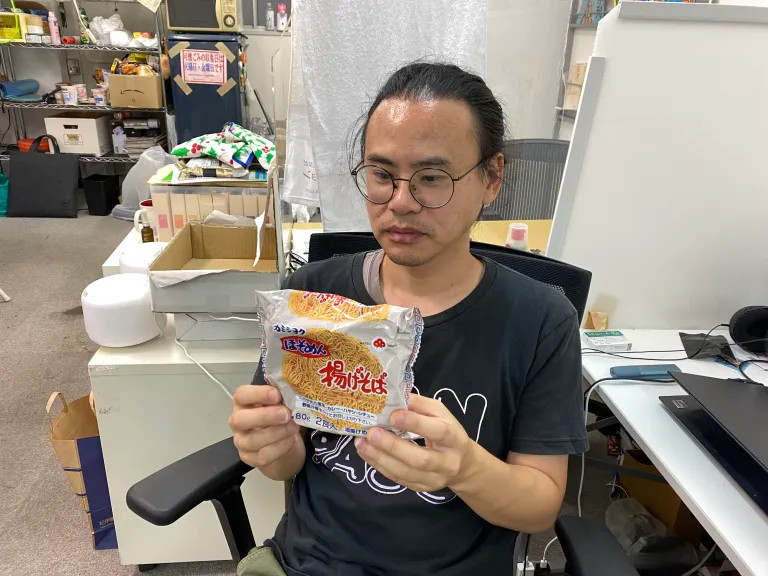
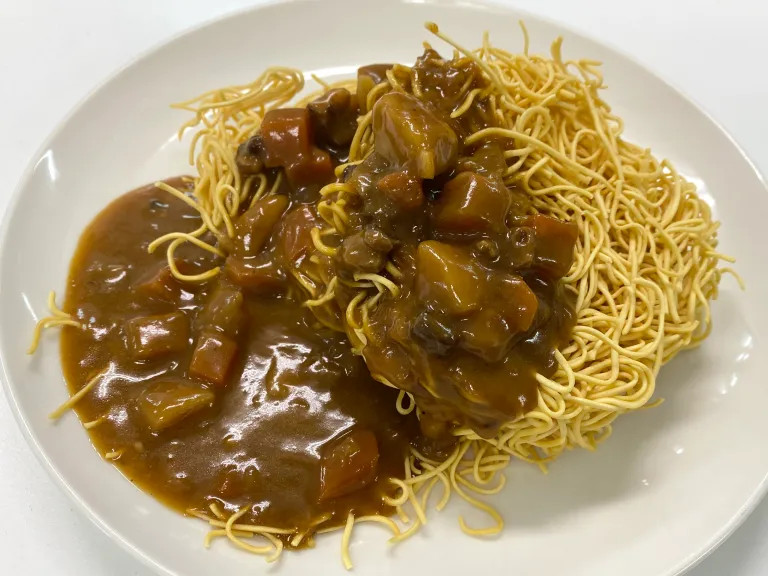

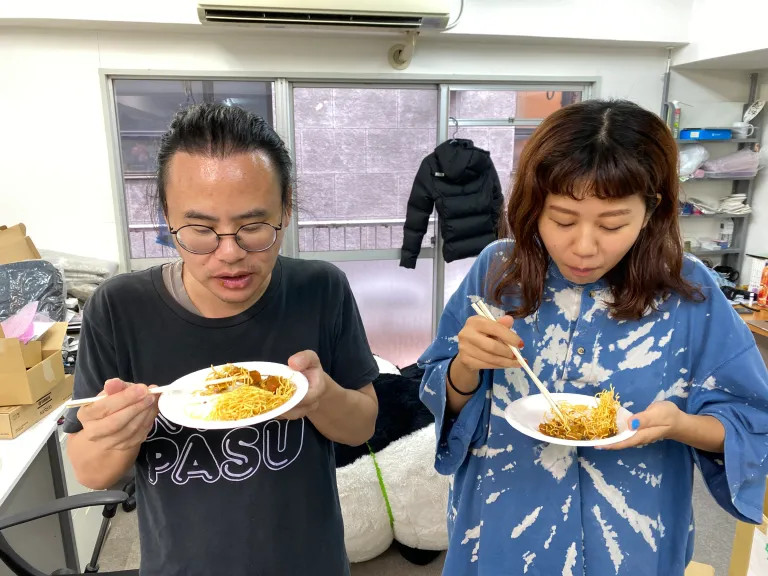
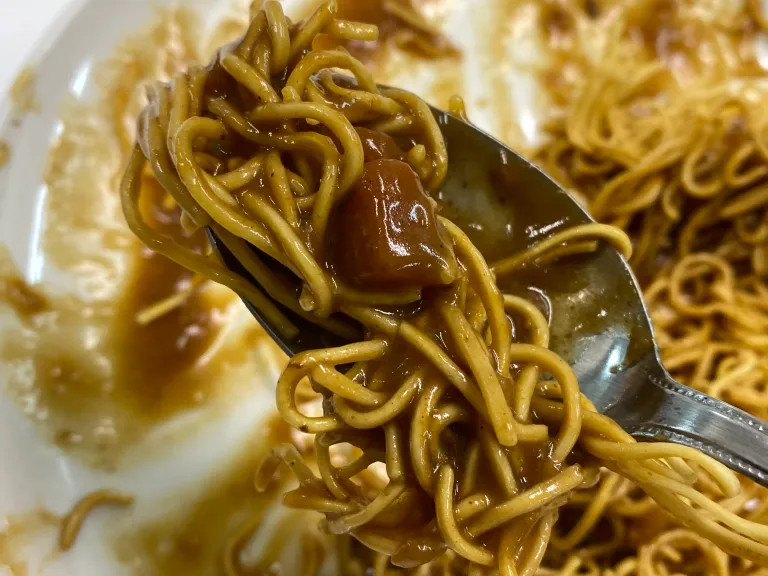
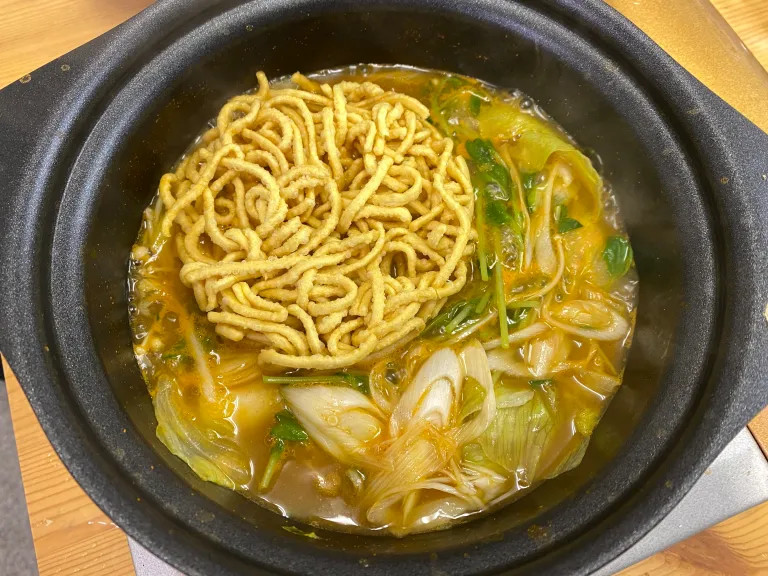
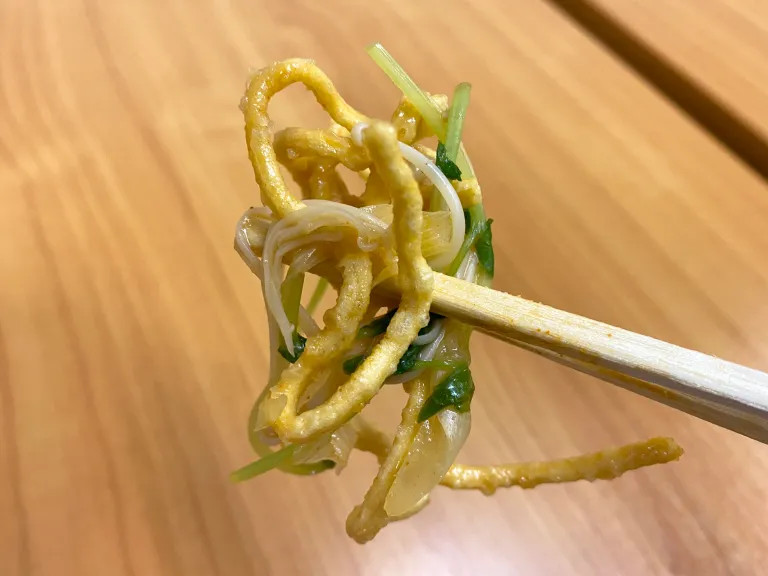
 Our reporter orders food from Uber Eats, falls in love, learns that fate works in mysterious ways
Our reporter orders food from Uber Eats, falls in love, learns that fate works in mysterious ways We try European Cup Noodle Soba flavors to see which ones come out on top 【Taste test】
We try European Cup Noodle Soba flavors to see which ones come out on top 【Taste test】 Have you tried Tokushima ramen? No? You should (says our obsessed Japanese-language reporter)
Have you tried Tokushima ramen? No? You should (says our obsessed Japanese-language reporter) “Hey Singaporean taxi driver! Take us to the best restaurant in Singapore!”
“Hey Singaporean taxi driver! Take us to the best restaurant in Singapore!” Hey, Thai tuk-tuk driver! Take us to the best Thai restaurant in this part of Bangkok!
Hey, Thai tuk-tuk driver! Take us to the best Thai restaurant in this part of Bangkok! Foreigner’s request for help in Tokyo makes us sad for the state of society
Foreigner’s request for help in Tokyo makes us sad for the state of society Japanese city loses residents’ personal data, which was on paper being transported on a windy day
Japanese city loses residents’ personal data, which was on paper being transported on a windy day Should you add tartar sauce to Japanese curry rice? CoCo Ichi makes diners an unusual offer
Should you add tartar sauce to Japanese curry rice? CoCo Ichi makes diners an unusual offer Seaside scenery, history, and so many desserts on Yokohama’s Akai Kutsu【Japan Loop Buses】
Seaside scenery, history, and so many desserts on Yokohama’s Akai Kutsu【Japan Loop Buses】 Harajuku Station’s beautiful old wooden building is set to return, with a new complex around it
Harajuku Station’s beautiful old wooden building is set to return, with a new complex around it Ghibli Park now selling “Grilled Frogs” from food cart in Valley of Witches
Ghibli Park now selling “Grilled Frogs” from food cart in Valley of Witches We try out “Chan Ramen”, an underground type of ramen popular in the ramen community
We try out “Chan Ramen”, an underground type of ramen popular in the ramen community Japanese company uses “crow language” to keep them away from garbage 【Video】
Japanese company uses “crow language” to keep them away from garbage 【Video】 Anti-NHK activist recommends “magic words” that will drive away fee collectors instantly
Anti-NHK activist recommends “magic words” that will drive away fee collectors instantly Anime girl English teacher Ellen-sensei becomes VTuber/VVTUber and NFT
Anime girl English teacher Ellen-sensei becomes VTuber/VVTUber and NFT McDonald’s new Happy Meals offer up cute and practical Sanrio lifestyle goods
McDonald’s new Happy Meals offer up cute and practical Sanrio lifestyle goods Japanese ramen restaurants under pressure from new yen banknotes
Japanese ramen restaurants under pressure from new yen banknotes French Fries Bread in Tokyo’s Shibuya becomes a hit on social media
French Fries Bread in Tokyo’s Shibuya becomes a hit on social media Studio Ghibli releases new action figures featuring Nausicaä of the Valley of the Wind characters
Studio Ghibli releases new action figures featuring Nausicaä of the Valley of the Wind characters Red light district sushi restaurant in Tokyo shows us just how wrong we were about it
Red light district sushi restaurant in Tokyo shows us just how wrong we were about it New private rooms on Tokaido Shinkansen change the way we travel from Tokyo to Kyoto
New private rooms on Tokaido Shinkansen change the way we travel from Tokyo to Kyoto Tokyo Tsukiji fish market site to be redeveloped with 50,000-seat stadium, hotel, shopping center
Tokyo Tsukiji fish market site to be redeveloped with 50,000-seat stadium, hotel, shopping center Beautiful Ghibli sealing wax kits let you create accessories and elegant letter decorations【Pics】
Beautiful Ghibli sealing wax kits let you create accessories and elegant letter decorations【Pics】 Studio Ghibli releases Kiki’s Delivery Service chocolate cake pouches in Japan
Studio Ghibli releases Kiki’s Delivery Service chocolate cake pouches in Japan New definition of “Japanese whiskey” goes into effect to prevent fakes from fooling overseas buyers
New definition of “Japanese whiskey” goes into effect to prevent fakes from fooling overseas buyers Our Japanese reporter visits Costco in the U.S., finds super American and very Japanese things
Our Japanese reporter visits Costco in the U.S., finds super American and very Japanese things All-you-can-drink Starbucks and amazing views part of Tokyo’s new 170 meter-high sky lounge
All-you-can-drink Starbucks and amazing views part of Tokyo’s new 170 meter-high sky lounge More foreign tourists than ever before in history visited Japan last month
More foreign tourists than ever before in history visited Japan last month New Pokémon cakes let you eat your way through Pikachu and all the Eevee evolutions
New Pokémon cakes let you eat your way through Pikachu and all the Eevee evolutions Disney princesses get official manga makeovers for Manga Princess Cafe opening in Tokyo
Disney princesses get official manga makeovers for Manga Princess Cafe opening in Tokyo Sales of Japan’s most convenient train ticket/shopping payment cards suspended indefinitely
Sales of Japan’s most convenient train ticket/shopping payment cards suspended indefinitely Sold-out Studio Ghibli desktop humidifiers are back so Totoro can help you through the dry season
Sold-out Studio Ghibli desktop humidifiers are back so Totoro can help you through the dry season Japanese government to make first change to romanization spelling rules since the 1950s
Japanese government to make first change to romanization spelling rules since the 1950s Ghibli founders Toshio Suzuki and Hayao Miyazaki contribute to Japanese whisky Totoro label design
Ghibli founders Toshio Suzuki and Hayao Miyazaki contribute to Japanese whisky Totoro label design Doraemon found buried at sea as scene from 1993 anime becomes real life【Photos】
Doraemon found buried at sea as scene from 1993 anime becomes real life【Photos】 Tokyo’s most famous Starbucks is closed
Tokyo’s most famous Starbucks is closed One Piece characters’ nationalities revealed, but fans have mixed opinions
One Piece characters’ nationalities revealed, but fans have mixed opinions We asked a Uniqlo employee what four things we should buy and their suggestions didn’t disappoint
We asked a Uniqlo employee what four things we should buy and their suggestions didn’t disappoint Princesses, fruits, and blacksmiths: Study reveals the 30 most unusual family names in Japan
Princesses, fruits, and blacksmiths: Study reveals the 30 most unusual family names in Japan We visit a ramen bar in Croatia, meet a whole new version of ramen we can’t wait to make at home
We visit a ramen bar in Croatia, meet a whole new version of ramen we can’t wait to make at home We try a rotating sushi restaurant in New Delhi, are surprised to find no rotating sushi
We try a rotating sushi restaurant in New Delhi, are surprised to find no rotating sushi Survey ranks the most popular Japanese curry dishes during winter
Survey ranks the most popular Japanese curry dishes during winter Hey, Croatian taxi driver! Take us to the restaurant with the best štrukli in Zagreb
Hey, Croatian taxi driver! Take us to the restaurant with the best štrukli in Zagreb Ramen and girls bar: Where you can talk to women who aren’t dressed like hosts or maids
Ramen and girls bar: Where you can talk to women who aren’t dressed like hosts or maids One minute is all you need to make this popular instant noodle meal from Okayama【SoraKitchen】
One minute is all you need to make this popular instant noodle meal from Okayama【SoraKitchen】 Our reporters try a yakiniku sauce called “Even Women Garlic” to figure out what that means
Our reporters try a yakiniku sauce called “Even Women Garlic” to figure out what that means Japan’s big eats just got even bigger at this little-known cafe
Japan’s big eats just got even bigger at this little-known cafe We stumbled upon “Pudding Street” in Hanoi, so of course we had to investigate
We stumbled upon “Pudding Street” in Hanoi, so of course we had to investigate McDonald’s breakfast menu in Hong Kong is like nothing we’ve ever seen in Japan
McDonald’s breakfast menu in Hong Kong is like nothing we’ve ever seen in Japan We get our hands on a coveted Yodobashi lucky bag, this time the beauty and health gadget box
We get our hands on a coveted Yodobashi lucky bag, this time the beauty and health gadget box Thanko’s lucky bag for 2023 brings the heat in more ways than one
Thanko’s lucky bag for 2023 brings the heat in more ways than one What’s it like to watch a sumo tournament in Tokyo during the pandemic?
What’s it like to watch a sumo tournament in Tokyo during the pandemic? Our Japanese language reporter gets lucky with Vietnam McDonald’s Prosperity Beef Burger
Our Japanese language reporter gets lucky with Vietnam McDonald’s Prosperity Beef Burger Kyoto curry bread comes with a very special filling
Kyoto curry bread comes with a very special filling
Leave a Reply